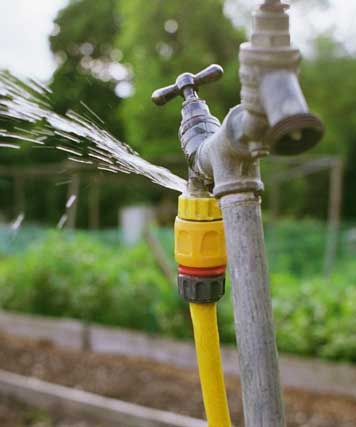6 Proven Methods to Identify Hidden Water Line Leaks Secretly
6 Proven Methods to Identify Hidden Water Line Leaks Secretly
Blog Article
Listed here in the next paragraph you'll find more worthwhile facts all about Detecting hidden plumbing leaks.

Early discovery of leaking water lines can reduce a possible disaster. Some tiny water leakages might not be visible.
1. Take A Look At the Water Meter
Every house has a water meter. Inspecting it is a proven way that aids you discover leaks. For beginners, switch off all the water sources. Make sure no person will purge, make use of the faucet, shower, run the cleaning equipment or dishwasher. From there, most likely to the meter as well as watch if it will alter. Considering that nobody is utilizing it, there must be no motions. That indicates a fast-moving leakage if it relocates. If you identify no adjustments, wait an hour or two and check back again. This means you may have a slow-moving leakage that can even be below ground.
2. Inspect Water Consumption
If you spot sudden adjustments, regardless of your intake being the exact same, it implies that you have leaks in your plumbing system. A sudden spike in your costs suggests a fast-moving leak.
A steady rise every month, even with the same habits, reveals you have a slow leakage that's likewise slowly rising. Call a plumber to completely examine your building, particularly if you feel a cozy area on your flooring with piping beneath.
3. Do a Food Coloring Examination
When it comes to water usage, 30% comes from commodes. If the color in some way infiltrates your bowl during that time without flushing, there's a leakage in between the container and bowl.
4. Asses Outside Lines
Do not fail to remember to examine your outdoor water lines as well. Needs to water seep out of the link, you have a loosened rubber gasket. One tiny leak can lose tons of water and surge your water costs.
5. Inspect as well as Examine the Scenario
Home owners should make it a routine to examine under the sink counters and even inside cupboards for any type of bad odor or mold and mildew development. These two warnings indicate a leak so timely interest is called for. Doing regular inspections, even bi-annually, can save you from a major problem.
Inspect for discolorations as well as deteriorating as a lot of devices and also pipelines have a life span. If you think leaking water lines in your plumbing system, don't wait for it to escalate.
Early discovery of dripping water lines can alleviate a prospective disaster. Some little water leakages may not be visible. Examining it is a proven means that helps you uncover leaks. One little leak can throw away lots of water and surge your water costs.
If you think leaking water lines in your plumbing system, don't wait for it to escalate.
WARNING SIGNS OF WATER LEAKAGE BEHIND THE WALL
PERSISTENT MUSTY ODORS
As water slowly drips from a leaky pipe inside the wall, flooring and sheetrock stay damp and develop an odor similar to wet cardboard. It generates a musty smell that can help you find hidden leaks.
MOLD IN UNUSUAL AREAS
Mold usually grows in wet areas like kitchens, baths and laundry rooms. If you spot the stuff on walls or baseboards in other rooms of the house, it’s a good indicator of undetected water leaks.
STAINS THAT GROW
When mold thrives around a leaky pipe, it sometimes takes hold on the inside surface of the affected wall. A growing stain on otherwise clean sheetrock is often your sign of a hidden plumbing problem.
PEELING OR BUBBLING WALLPAPER / PAINT
This clue is easy to miss in rooms that don’t get much use. When you see wallpaper separating along seams or paint bubbling or flaking off the wall, blame sheetrock that stays wet because of an undetected leak.
BUCKLED CEILINGS AND STAINED FLOORS
If ceilings or floors in bathrooms, kitchens or laundry areas develop structural problems, don’t rule out constant damp inside the walls. Wet sheetrock can affect adjacent framing, flooring and ceilings.
https://www.servicemasterbyzaba.com/blog/how-to-detect-water-leakage-in-walls/

I was made aware of that article on Top leak detection hacks from an acquaintance on our other web property. Those who enjoyed our post kindly make sure you remember to pass it around. Thanks a lot for taking the time to read it.
The right fix? Ring! Report this page